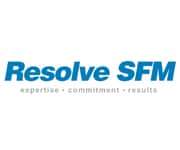Overcoming Challenges for Facility Managers (FMs) in the Public Sector: Strategies for Success
Facility Managers (FMs) in the public sector play a crucial role in ensuring that government buildings and facilities operate efficiently and effectively. However, their job is fraught with unique challenges that require innovative solutions and a proactive approach. Overcoming these challenges is essential for the smooth functioning of public services and the well-being of the community. This article explores some of the critical challenges faced by FMs in the public sector and offers strategies to overcome them.
Budget Constraints
One of the most significant challenges for FMs in the public sector is managing budget constraints. Public sector facilities often operate on tight budgets, which can limit the ability to invest in necessary upgrades, maintenance, and new technologies. To overcome this challenge, FMs can adopt a few strategies:
- Prioritise Projects: FMs should prioritise projects based on urgency and impact. Implementing a systematic approach to identify critical areas that need immediate attention can help allocate resources more effectively.
- Energy Efficiency Initiatives: Investing in energy-efficient systems and practices can lead to long-term savings. While the initial investment might be high, the reduction in energy costs can offset this over time.
- Grants and Funding Opportunities: FMs should actively seek out grants and funding opportunities available for public sector projects. These can provide the necessary financial support for critical upgrades and initiatives.
Aging Infrastructure
Many public sector facilities are housed in aging buildings that require constant maintenance and upgrades. Dealing with outdated infrastructure can be challenging due to the high costs and logistical complexities involved. To address this issue:
- Regular Maintenance: Implementing a rigorous maintenance schedule can prevent minor issues from escalating into major problems. Regular inspections and preventive maintenance can extend the lifespan of aging infrastructure.
- Incremental Upgrades: Instead of overhauling an entire facility at once, FMs can plan incremental upgrades. This approach spreads out the costs over time and allows for more manageable project scopes.
- Leveraging Technology: Utilising modern technology, such as Building Information Modeling (BIM) and intelligent building systems, can provide detailed insights into the condition of infrastructure and help in planning maintenance and upgrades more efficiently.
Regulatory Compliance
Public sector facilities must comply with a myriad of regulations and standards. Keeping up with these requirements can be overwhelming, particularly when they are frequently updated. To ensure compliance:
- Stay Informed: FMs should stay updated on relevant regulations and industry standards. Subscribing to industry newsletters, attending conferences, and participating in professional organisations can help stay informed.
- Training and Education: Regular training for the FM team on regulatory requirements is crucial. This ensures that everyone is aware of the latest standards and how to implement them.
- Compliance Audits: Conducting regular compliance audits can help identify areas of non-compliance before they become significant issues. Audits can also highlight best practices and areas for improvement.
Workforce Management
Managing a diverse workforce with varying levels of expertise and experience can be challenging. FMs must ensure that their team is well-trained and motivated to perform their duties effectively. Strategies to overcome workforce management challenges include:
- Professional Development: Investing in the professional development of the FM team can enhance their skills and knowledge. Providing opportunities for training and certification can boost morale and productivity.
- Clear Communication: Establishing clear lines of communication within the team is essential. Regular meetings, updates, and feedback sessions can ensure everyone is on the same page and working towards common goals.
- Leveraging Technology: Workforce management software can streamline scheduling, task assignment, and performance tracking, helping to optimise human resource use and improve efficiency.
Sustainability Goals
Increasingly, public sector facilities are expected to meet sustainability goals and reduce their environmental impact. This can be challenging due to budget constraints and the complexities of retrofitting old buildings. To achieve sustainability targets:
- Energy Audits: Conducting energy audits can identify areas where energy consumption can be reduced. Implementing energy-saving measures, such as upgrading lighting and HVAC systems, can significantly lower energy usage.
- Sustainable Practices: Encouraging sustainable practices, such as recycling and water conservation, within the facility can contribute to overall sustainability goals.
- Green Certifications: Pursuing green building certifications, such as LEED or BREEAM, can provide a structured approach to achieving sustainability goals. These certifications also enhance the facility's reputation and demonstrate a commitment to environmental responsibility.
In conclusion, while Facility Managers in the public sector face numerous challenges, they can overcome them through strategic planning, continuous education, and the adoption of modern technologies and practices. By addressing budget constraints, aging infrastructure, regulatory compliance, workforce management, and sustainability goals, FMs can ensure the efficient operation of public sector facilities and contribute to the well-being of the communities they serve.
Pinnacle CMMS (Computerised Maintenance Management System) provides essential support for public and community housing by streamlining maintenance operations and boosting overall efficiency. By centralising asset management, scheduling preventive maintenance, and tracking work orders, Pinnacle CMMS ensures properties remain well-maintained and compliant with regulatory standards. This system enables housing managers to prioritise tasks effectively, optimise resource allocation, and extend the lifespan of crucial infrastructure. Additionally, with powerful reporting and analytics capabilities, Pinnacle CMMS facilitates data-driven decision-making, promoting transparency and accountability in public sector operations. By utilising Pinnacle CMMS, public and community facilities can enhance management practices while maximising operational effectiveness and cost-efficiency. Learn more about effective public sector asset and maintenance management strategies. Contact us today!














